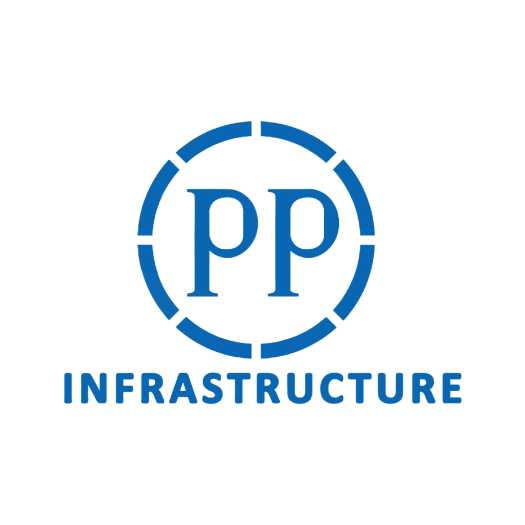We understand that establishing a new warehouse setup can be a complex and challenging investment. A flawed plan can lead to operational inefficiencies and inflated costs that are difficult to fix later.
These issues directly impact your supply chain, causing delays and customer dissatisfaction. Implementing a robust warehouse software is crucial to streamline processes and prevent long-term problems.
This comprehensive guide will serve as your roadmap for a successful setup. Let’s begin your journey toward transforming your warehouse into a strategic operational asset.
Key Takeaways
|

What Is Warehouse Setup?
Warehouse setup is the comprehensive process of designing, planning, and implementing all physical and operational elements within a warehouse. This includes determining the layout, selecting equipment, and integrating technology to manage inventory.
This process is typically managed by a team of operations managers, supply chain specialists, and logistics consultants. They work together to ensure the final setup aligns with the company’s business goals and operational needs.
Why the Right Warehouse Setup is Crucial for Your Business
A well-designed warehouse is more than just a storage space; it is the core of your operational efficiency. An optimal setup directly impacts your profitability, customer satisfaction, and ability to scale.
- Boosts Operational Efficiency: A logical workflow minimizes wasted movement and time, which significantly cuts down on labor costs.
- Improves Inventory Accuracy: Proper organization and technology integration ensure you have a clear view of your stock, reducing errors.
- Enhances Customer Satisfaction: An efficient system allows for faster order processing and shipping, leading to quicker delivery times.
- Increases Profitability: By reducing operational costs and errors, you can improve margins and reallocate resources for growth.
- Supports Business Scalability: A flexible and well-planned setup allows your operations to grow without major disruptions or redesigns.
Strategic Approach to Set Up Your Warehouse
A successful warehouse setup requires a structured, multi-stage approach to ensure all elements work together seamlessly. This strategic process turns your business goals into a functional and efficient operational reality.
Stage 1: Strategic Planning and Budgeting
This foundational stage aligns your warehouse operations with broader business goals. It involves defining objectives, analyzing needs, and creating a financial framework for the entire project.
- Define Goals and Scale: Clearly outline your warehouse objectives and forecast future growth to determine size and capacity requirements.
- Analyze Space and Location: Calculate your cubic space needs and select a location that balances supplier proximity, transport access, and customer reach.
- Create a Budget: Develop detailed estimates for one-time Capital Expenditures (CAPEX) and ongoing Operational Expenditures (OPEX).
- Ensure Compliance: Research and understand all local regulations, permits, and safety standards to ensure a legally compliant design.
Stage 2: Designing an Efficient Warehouse Layout and Workflow
This stage translates your strategic plan into a physical blueprint. The goal is to design a layout that maximizes space, ensures a smooth flow of goods, and enhances productivity.
- Apply Basic Design Principles: Focus on maximizing space utilization, ensuring product accessibility, minimizing travel time, and maintaining flexibility.
- Choose a Layout Type: Select a suitable flow pattern like U-Shaped, I-Shaped, or L-Shaped based on your operational volume and building structure.
- Define Work Zones: Designate and optimize key areas such as receiving, storage, picking, packing, and shipping to prevent bottlenecks.
- Design Material Flow: Map a logical, one-way path for goods to move through the warehouse to avoid congestion and backtracking.
Stage 3: Selecting Storage Systems and Equipment
Here, you will choose the physical hardware that forms the backbone of your warehouse. The right systems and equipment are crucial for maximizing storage density and operational speed.
- Choose the Right Racking System: Select a system like selective, drive-in, or pallet flow racking based on your product type and inventory rotation needs (FIFO/LIFO).
- Determine Material Handling Equipment (MHE): Choose appropriate MHE, such as forklifts, pallet jacks, or conveyors, that complements your racking system and workflow.
- Implement Identification Technology: Decide on a system like barcodes, QR codes, or RFID to enable accurate and rapid tracking of inventory throughout the warehouse.
Stage 4: Implementing Technology and a Warehouse Management System (WMS)
Technology acts as the brain of your operation, providing control and visibility. Implementing a WMS is essential for automating processes and making data-driven decisions.
- Leverage a Warehouse Management System (WMS): Implement a WMS to manage inventory, direct order fulfillment, and provide detailed performance analytics.
- Integrate WMS with ERP: Connect your WMS and ERP systems to ensure seamless data flow between warehouse operations and other business functions.
- Consider Automation: Evaluate automation solutions like conveyors or robotics to increase throughput and accuracy for long-term efficiency.
- Train Your Team: Develop a comprehensive training program to ensure your staff can effectively use the new technology and systems.
Stage 5: Recruiting and Developing Your Operational Team
Your people are your most critical asset. This stage focuses on building a skilled and motivated team to run the warehouse efficiently and safely.
- Define Team Structure and Roles: Establish a clear organizational chart with defined responsibilities for roles like managers, supervisors, and associates.
- Recruit and Select Staff: Implement a recruitment process that identifies candidates with the right attitude, reliability, and attention to detail.
- Design Onboarding and Training: Create a thorough onboarding program and a plan for continuous skill development to ensure high performance and flexibility.
Stage 6: Establishing Safety and Compliance Procedures
A safe working environment is non-negotiable. This stage involves creating and implementing rigorous safety protocols to protect your team and ensure regulatory compliance.
- Adhere to OSH Standards: Implement all mandatory Occupational Safety and Health (OSH) standards for aisle clearance, fire safety, and protective equipment.
- Handle Hazardous Materials Safely: If applicable, establish specialized procedures for storing and handling hazardous materials according to regulations.
- Develop an Emergency Response Plan: Create and regularly practice a clear plan for emergencies such as fires, spills, or medical incidents.
Stage 7: Performance Measurement and Continuous Optimization
The setup process doesn’t end at launch. This final stage is about creating a cycle of continuous improvement by measuring performance and optimizing processes.
- Define Key Performance Indicators (KPIs): Establish critical metrics like order accuracy rate, on-time shipping, and inventory turnover to measure operational health.
- Conduct Regular Audits: Perform regular process audits and performance evaluations to identify inefficiencies and areas for improvement.
- Plan for Scalability: Develop strategies to future-proof your warehouse, such as using modular layouts and scalable technology, to accommodate growth.
A Practical Checklist for a Successful Warehouse Setup
To keep your project on track, we have summarized the key actions from each stage into a simple checklist. Use this as a quick reference to ensure no critical step is overlooked during your setup process.
- Stage 1: Planning & Budgeting
- Define clear business objectives for the warehouse.
- Forecast future operational scale and growth.
- Analyze space requirements and select a strategic location.
- Develop a detailed CAPEX and OPEX budget.
- Research and confirm all regulatory and compliance requirements.
- Stage 2: Layout & Workflow Design
- Choose the optimal flow pattern (U-Shaped, I-Shaped, etc.).
- Designate and size all key operational zones.
- Map out a streamlined, one-way material flow.
- Create a detailed CAD drawing of the layout for review.
- Stage 3: Equipment & Storage
- Select racking systems based on inventory profile and rotation needs.
- Choose appropriate MHE for your layout and throughput.
- Decide on and plan for identification technology (Barcode, RFID).
- Stage 4: Technology & Systems
- Select a Warehouse Management System (WMS) that meets your needs.
- Plan for seamless integration between WMS and ERP.
- Develop a comprehensive training plan for all system users.
- Stage 5: Team & People
- Define the organizational structure and all key roles.
- Recruit staff with the right skills and attitude.
- Implement a thorough onboarding and continuous training program.
- Stage 6: Safety & Compliance
- Implement all required OSH standards.
- Develop and document an emergency response plan.
- Conduct regular safety training and drills.
- Stage 7: Performance & Optimization
- Establish and track key warehouse KPIs.
- Schedule regular process audits and performance reviews.
- Develop a long-term plan for scalability and continuous improvement.
Optimize Your Warehouse Operations with a Solution from HashMicro
An integrated system is crucial for unifying your warehouse setup and overcoming challenges like manual errors and workflow inefficiencies. The HashMicro Warehouse Management Software is engineered to create a transparent and highly efficient operational environment.
- Real-Time Inventory Tracking: The system uses barcode and RFID technology to monitor stock levels and locations across the warehouse.
- Automated Order Fulfillment: It generates system-directed tasks and optimizes picking routes for staff to follow during order processing.
- Intelligent Slotting Management: The software suggests optimal storage locations for items based on their velocity, size, and other characteristics.
- Seamless ERP Integration: It directly connects with accounting, sales, and purchasing modules to automate the flow of data across departments.
- Advanced Reporting & Analytics: The system provides comprehensive dashboards and customizable reports on key warehouse performance metrics.
Our solution can significantly enhance your operational efficiency, data transparency, and process automation. See how our system can specifically benefit your business by trying a free demo today.
Conclusion
An effective warehouse setup is a strategic process that integrates planning, design, technology, and a skilled team. Following a structured approach ensures you create an efficient, adaptable, and profitable operational hub.
The key to unifying these elements is a powerful, integrated technology platform. The HashMicro Warehouse Management Software provides the central control needed for real-time visibility and process automation.
If you are ready to elevate your warehouse efficiency, explore how our solution can maximize your operational potential. We invite you to see the system in action by scheduling a free demo with our team.
FAQ about Warehouse Setup
-
What are the 5 main components of a warehouse?
The five core components are: 1. Space (storage and operational areas), 2. Storage Equipment (racking and shelving), 3. Material Handling Equipment (forklifts, conveyors), 4. A Labor Force (staff), and 5. A Warehouse Management System (WMS) to control everything.
-
How do you plan a warehouse setup?
Planning a warehouse setup involves several key stages: defining business goals and operational scale, analyzing space needs, creating a detailed budget (CAPEX and OPEX), designing an efficient layout and workflow, and selecting the appropriate technology and equipment.|
-
What is the most important factor in warehouse layout?
The most important factor is designing for an optimal workflow or material flow. The layout should minimize travel distance for staff and equipment, prevent bottlenecks, and ensure a logical sequence of operations from receiving to shipping to maximize productivity and safety.






























